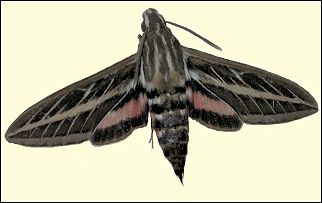
Beautiful butterflies and marvelous moths! Some sure can be nuisances, but think of the magical atmosphere a set of fluttering wings can create! Most of us know that the butterflies and moths come from caterpillars, some of which can be real pests. Caterpillars eat their body weight many times over, and they grow and grow and grow! Why do those caterpillars have to be so destructive, when they inevitably turn into such attractive adults?
One reason they need so much energy is that their bodies must change,
or go through metamorphosis. This certainly takes a lot of energy! But what many people
don't realize is that some moths, like the saturnid moths found in Mexico,
don't even have mouth parts as adults! They live only a few days as
adults—just long enough to reproduce—before dying. We should consider
ourselves lucky to see these beautiful, though short-lived, creatures. It helps us
understand that even the most plain and obnoxious youngster may yet become a beautiful
grownup! 
Listen to the Audio (mp3 format) as recorded by KTEP, Public Radio for the Southwest.
Contributor: Kodi R. Jeffery, Centennial Museum, University of Texas at El Paso.
Desert Diary is a joint production of the Centennial Museum and KTEP National Public Radio at the University of Texas at El Paso.

A Hyles moth. The coloration and marking allow this moth to blend into the background during its resting period. Photograph by A.H. Harris.